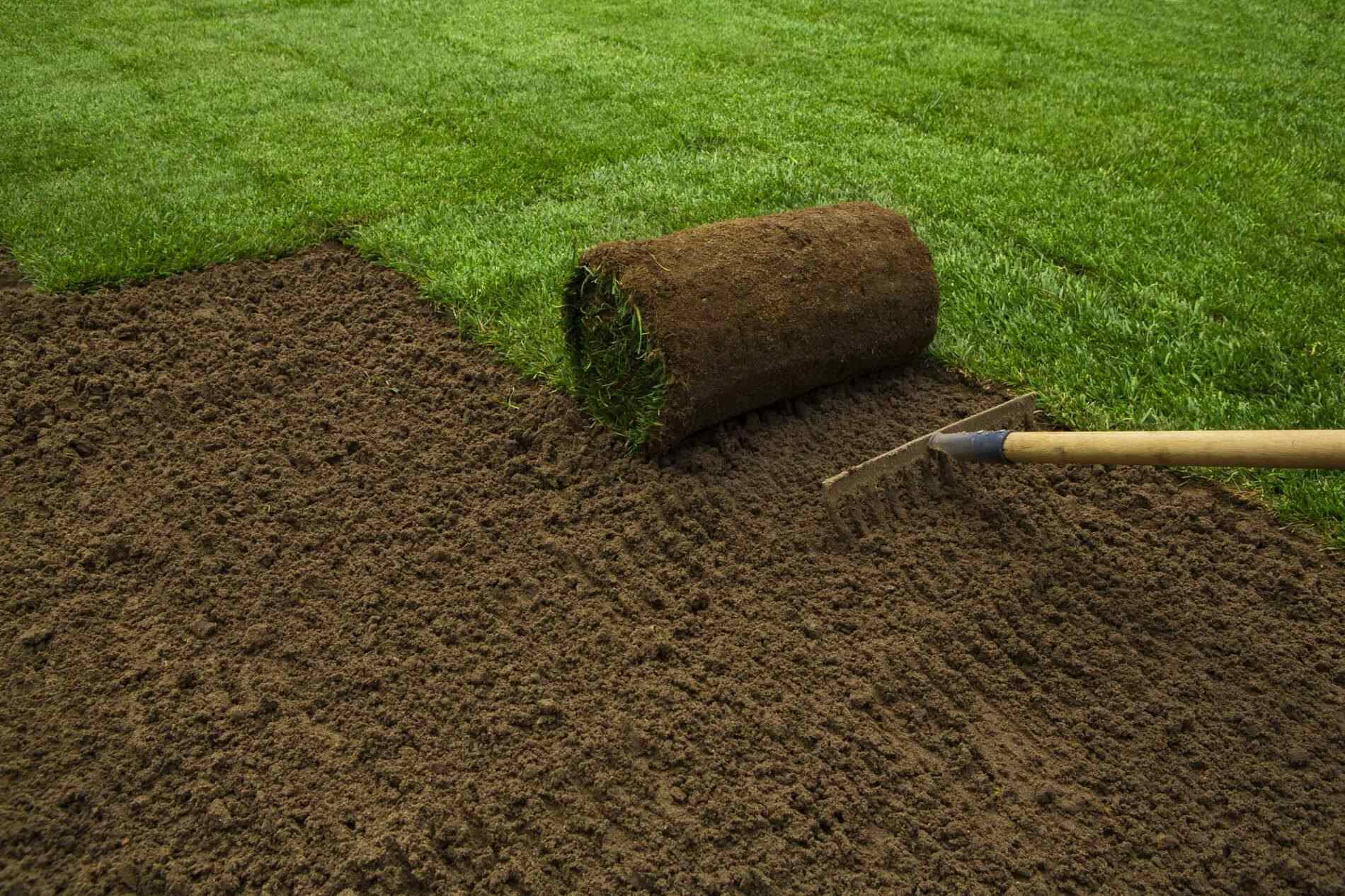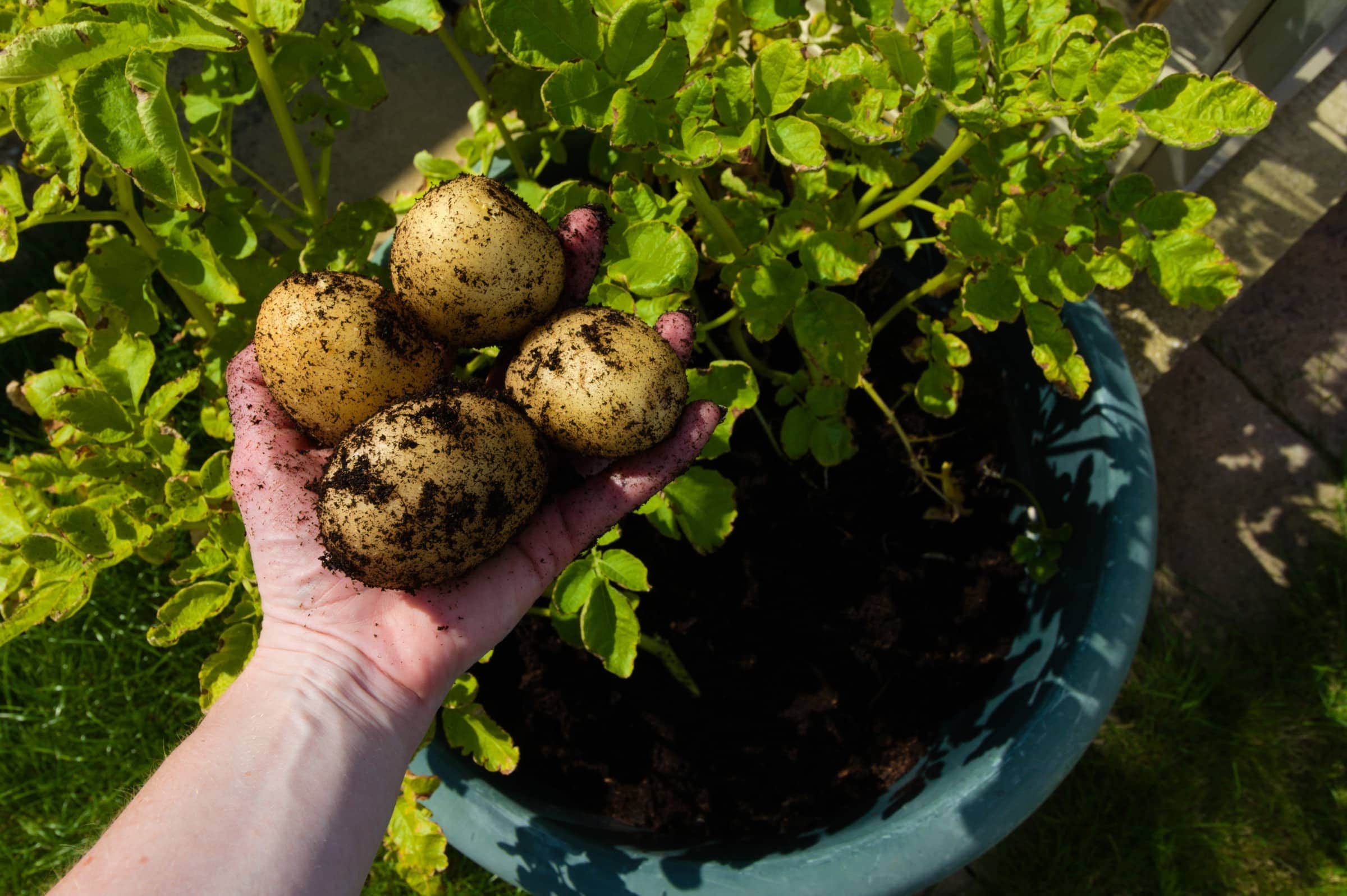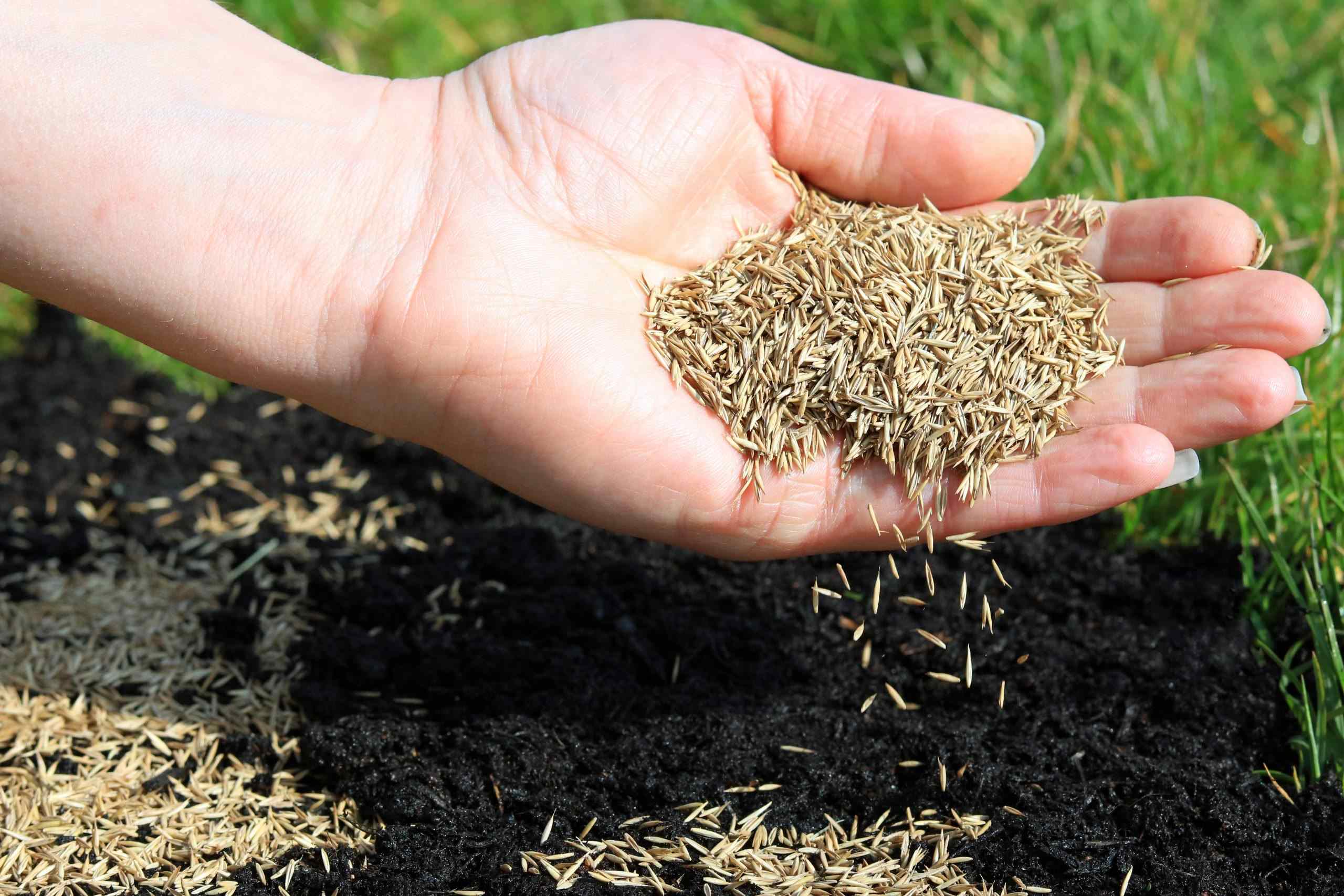Home>Gardening Techniques>Plant Care>How Long After Planting Sod Can You Mow


Plant Care
How Long After Planting Sod Can You Mow
Published: August 25, 2023
Discover when it is safe to mow your newly planted sod and get expert tips for plant care to ensure a healthy and vibrant lawn
(Many of the links in this article redirect to a specific reviewed product. Your purchase of these products through affiliate links helps to generate commission for Chicagolandgardening.com, at no extra cost. Learn more)
Table of Contents
Introduction
Welcome to the world of plant care! Whether you are a seasoned gardener or a newbie, understanding the intricacies of plant care is essential to ensure the health and vitality of your green companions. One key aspect of plant care is knowing how to properly maintain and groom your plants, including when to mow your sod.
Planting sod can instantly transform a barren yard into a lush and vibrant space. However, after the sod installation, it’s important to give it some time to establish its roots and take hold in the soil before subjecting it to mowing. Mowing too soon can disrupt the transplanting process and potentially damage the delicate roots of the newly laid sod.
In this article, we will explore the factors to consider before mowing your newly planted sod. We will discuss the type of sod, climate and weather conditions, root establishment, and the recommended waiting period before mowing. Additionally, we will provide you with some helpful tips on how to mow your sod effectively.
So, let’s dive in and learn more about when and how to mow your sod for optimal plant care!
Factors to Consider
Before grabbing your lawnmower and heading out to trim your newly installed sod, it’s important to consider several factors that can impact the timing of when to start mowing. Understanding these factors will help ensure that you mow your sod at the right time, promoting healthy growth and preventing any potential damage.
Type of Sod: Different types of sod have varying growth rates and root establishment times. Some sod varieties may take longer to establish roots, while others may establish quickly. It’s crucial to know the specific type of sod you have planted and research its specific requirements for mowing.
Climate and Weather Conditions: The weather plays a significant role in the growth and development of your sod. Factors such as temperature, humidity levels, and rainfall can affect how quickly the sod establishes and grows. In regions with hot and dry climates, sod may take longer to establish roots, whereas in cooler and more humid climates, the process may be quicker.
Root Establishment: The primary factor to consider before mowing your sod is the establishment of its roots. Sod needs time to develop a strong root system to anchor itself in the soil and absorb nutrients and water effectively. Mowing too soon can cause the roots to detach, leading to patchy and unhealthy growth.
Timeframe for Mowing: The timeframe for mowing your sod depends on a variety of factors, including the type of sod, climate, and root establishment. It’s essential to be patient and allow sufficient time for the sod to establish roots before initiating any mowing activities.
By taking into account these critical factors, you can make an informed decision about when to start mowing your newly planted sod. Understanding the unique needs of your sod will help promote healthy growth and establish a flourishing lawn.
Type of Sod
When it comes to mowing your newly planted sod, it’s crucial to consider the type of sod you have installed. Different types of sod have varying characteristics, growth rates, and root establishment times. Understanding the specific needs and requirements of your sod will help you determine the appropriate timing for mowing.
Some common types of sod include:
- Zoysia Grass: Zoysia grass sod is known for its dense growth and deep root system. It can take longer to establish compared to other sod types, so it’s important to wait for a more established root system before mowing.
- Bermuda Grass: Bermuda grass sod is known for its resilience and tolerance to hot and dry climates. It generally establishes quickly, allowing for earlier mowing compared to other sod types.
- Fescue Grass: Fescue grass sod is commonly used in cooler climates and has a moderate growth rate. It may take a bit longer to establish compared to Bermuda grass, so it’s important to be patient and wait for proper root development before mowing.
- Centipede Grass: Centipede grass sod has a slow growth rate and thrives in warm climates. It requires a longer establishment period before mowing, typically waiting for the roots to firmly anchor into the soil.
It’s important to research and identify the specific type of sod you have planted to understand its growth habits and recommended maintenance practices. This knowledge will help you determine the optimum timing for mowing your sod.
Now that we’ve covered the importance of considering the type of sod, let’s move on to the next factor to consider – climate and weather conditions.
Climate and Weather Conditions
The climate and weather conditions in your region play a significant role in the establishment and growth of your sod. Understanding how these factors impact your sod will help you determine the appropriate timing for mowing.
Temperature: The temperature influences the rate at which your sod establishes roots and grows. In warmer climates, sod generally establishes more quickly, allowing for earlier mowing. Conversely, in cooler climates, the establishment process may take longer, and it’s important to exercise patience before introducing mowing activities.
Humidity: Humidity levels also affect the growth and development of your newly planted sod. Higher humidity can create a more conducive environment for root establishment, promoting quicker growth and allowing for earlier mowing. In drier and more arid regions, it may take longer for the sod to establish and reach a suitable condition for mowing.
Rainfall: Adequate rainfall provides the necessary moisture for your sod to thrive. If your region experiences frequent rainfall, the sod may establish faster, allowing for earlier mowing. However, if rainfall is scarce, you may need to wait longer for the sod to receive sufficient water and establish strong roots before mowing.
Extreme Weather Events: It’s important to consider extreme weather events such as heatwaves, droughts, or heavy storms. These events can impact the health and growth of your sod and may require you to adjust your mowing schedule accordingly. During extreme heat or drought, it’s advisable to delay mowing until the weather conditions improve and the sod is better equipped to handle the stress of mowing.
By considering the climate and weather conditions in your region, you can make an informed decision about when to start mowing your sod. Remember, every region is unique, and it’s crucial to adapt to the specific conditions you are experiencing for the best results.
Now that we have explored the impact of climate and weather conditions, let’s move on to discussing the importance of root establishment before mowing.
Root Establishment
One of the most crucial factors to consider before mowing your newly planted sod is the establishment of its roots. Root establishment is a critical process that allows the sod to anchor itself in the soil and absorb nutrients and water effectively. It’s important to give your sod enough time to develop a strong root system before subjecting it to the stress of mowing.
When you first install sod, it consists of thin layers of soil and grass roots. As you water the sod regularly, the grass roots begin to grow and spread, establishing a firm connection with the underlying soil. This process can take several weeks, depending on various factors such as the type of sod and the prevailing climate conditions.
By allowing the roots to establish before mowing, you give the sod a better chance to develop a healthy and lush lawn. Mowing too soon can disrupt the root establishment process, causing the roots to detach and potentially harming the overall health of the sod.
To determine if the roots have established sufficiently, gently tug on a small section of the sod after a few weeks of installation. If the sod resists being pulled up easily, it is an indication that the roots have successfully anchored in the soil. However, if the sod easily lifts or shows signs of loose soil underneath, it’s advisable to wait a bit longer before mowing.
Establishing a strong and healthy root system is crucial for the long-term success and maintenance of your sod. By allowing the roots to establish fully before mowing, you are setting a solid foundation for a vibrant and thriving lawn.
Now that we understand the importance of root establishment, let’s move on to discussing the recommended waiting period before mowing your sod.
Timeframe for Mowing
The timeframe for mowing your newly planted sod varies depending on several factors, including the type of sod, climate, and root establishment. It’s important to exercise patience and wait for the appropriate time before initiating any mowing activities. Rushing to mow too soon can have detrimental effects on the health and growth of your sod.
As a general rule of thumb, most experts recommend waiting for at least two to three weeks after sod installation before mowing. This time allows for the roots to establish in the soil and ensures that the sod is firmly rooted and ready for mowing.
However, it’s important to note that the waiting period can vary based on specific circumstances. For slow-growing sod types, such as Zoysia grass or Fescue grass, you may need to wait a bit longer, possibly up to four to six weeks, before mowing. On the other hand, faster-growing sod types like Bermuda grass may be ready for mowing after just two weeks.
Additionally, consider the climate and weather conditions in your area. If you have experienced colder or wetter weather during the establishment period, it may be wise to wait a bit longer before mowing. Conversely, if you are in a warm and dry climate, the sod may establish more quickly, allowing for earlier mowing.
Remember, the goal is to ensure that the roots have firmly anchored in the soil to withstand the stress of mowing. Performing a gentle tug test, as mentioned earlier, can help determine if the sod is ready. If the sod remains firmly in place, indicating good root establishment, it’s a sign that it’s time to start mowing.
Taking into account the type of sod, climate, and root establishment, the recommended waiting period for mowing your sod can range from two to six weeks. Patience during this time will pay off in the long run, ensuring a healthy, vibrant, and well-maintained lawn.
Now that we have discussed the timeframe for mowing, let’s explore the signs that indicate your sod is ready to be mowed.
Recommended Waiting Period
When it comes to mowing your newly planted sod, it’s essential to wait for the recommended waiting period to ensure that it has established proper root growth and prepared for the stresses of mowing. While the waiting period can vary depending on factors such as the type of sod and climate, there are some general guidelines to follow.
In most cases, it is recommended to wait at least two to three weeks after sod installation before mowing. This timeframe allows the sod to establish its roots firmly in the soil and ensures that it has developed a strong enough foundation to withstand the mowing process.
However, it is crucial to consider the specific recommendations for the type of sod you have planted. Different sod varieties have different growth rates and root establishment times. Some sod types, like Zoysia grass or Fescue grass, may require a longer waiting period, possibly ranging from four to six weeks, before mowing. On the other hand, faster-growing sod types such as Bermuda grass may be ready for mowing after just two weeks.
Additionally, consider the climate and weather conditions in your area. Factors such as temperature, humidity, and rainfall can impact the establishment rate of your sod. Colder or wetter weather may prolong the waiting period, while warmer and drier conditions may expedite the establishment process.
It’s important to mention that the waiting period should not be a rigid timeline but rather a guideline. Conducting a gentle tug test can help determine if your sod is ready for mowing. If the sod resists being easily pulled up, it is a sign that the roots have established, and it is safe to start mowing.
By following the recommended waiting period, you help ensure the long-term health and growth of your sod. It allows the roots to establish fully, leading to a more resilient and thriving lawn. Remember, patience during this period will be rewarded with a beautiful and well-maintained yard.
Now that we understand the importance of the waiting period, let’s move on to discussing the signs that indicate your sod is ready to be mowed.
Signs of Ready-to-Mow Sod
Knowing when your sod is ready to be mowed is crucial to maintain its health and promote optimal growth. While the recommended waiting period gives a general guideline, there are several signs you can look for to determine if your sod is indeed ready for mowing.
1. Firmly Established Roots: Gently tug on a small section of the sod to check if the roots have firmly anchored into the soil. If the sod resists being easily pulled up and shows no signs of loose patches or soil, it is an indication that the roots have properly established. Firmly rooted sod can withstand the stress of mowing.
2. Uniform Growth: Look for signs of uniform growth across the entire sod area. If you notice consistent and even growth without any areas appearing thinner or sparser, it suggests that the sod is well-established and ready for mowing.
3. Dense and Healthy Appearance: Examine the overall appearance of your sod. A healthy lawn will have a dense and vibrant look, with lush green blades. If your sod has a healthy and uniform appearance, it likely indicates that the roots have adequately established, and it is time to start mowing.
4. Adequate Height: Check the height of your sod blades. Once the sod has reached a height of about 3 to 4 inches, it is an indication that it is ready for mowing. However, be cautious not to let the sod grow excessively long, as it can become more difficult to mow and may impact its overall health.
5. Resistance to Foot Traffic: Walk over the sod and observe how it reacts to foot traffic. If the sod remains resilient and bounces back quickly after being walked on, it indicates that the roots have established sufficiently to handle the stress of mowing.
When these signs are present, it is usually a good indication that your sod is ready to be mowed. However, it’s important to remember that each lawn is unique, and the signs may vary depending on the sod type, climate, and other factors. Trust your judgment and consider consulting with a local gardening expert if you have any doubts about the readiness of your sod for mowing.
Now that we have discussed the signs of ready-to-mow sod, let’s move on to some helpful mowing tips to ensure the best results.
Mowing Tips
Now that your newly planted sod is ready to be mowed, it’s important to follow some key tips to ensure the best results and maintain the health and appearance of your lawn.
1. Choose the Right Mowing Height: Set your lawnmower to the appropriate cutting height for your specific type of sod. The recommended mowing height can vary, so refer to the guidelines provided by the sod manufacturer or consult with a local gardening expert. Mowing at the correct height promotes healthy growth and helps prevent weed invasion.
2. Mow Regularly: Once you start mowing, it’s important to establish a regular mowing schedule to maintain your lawn’s appearance. Consistent mowing helps promote even growth and prevents your lawn from becoming overgrown or stressed.
3. Use Sharp Mower Blades: Ensure that your lawnmower blades are sharp to achieve clean and precise cuts. Dull blades can tear the grass, leading to a ragged and unhealthy appearance. Sharpen or replace your mower blades regularly for optimal mowing results.
4. Mow When the Grass is Dry: It’s best to mow your sod when it is dry. Wet grass can clump and stick to the mower blades, resulting in an uneven cut and potentially damaging the grass. Additionally, mowing wet grass can spread diseases and promote weed growth.
5. Vary the Mowing Pattern: Alternate your mowing direction each time you mow to prevent the grass from leaning in one direction. Varying the mowing pattern helps ensure an even and uniform appearance, promoting healthy growth in all areas of your lawn.
6. Don’t Remove More Than One-Third of the Blade Length: Avoid cutting off more than one-third of the grass blade length during each mowing session. Removing too much at once can stress the grass and inhibit proper growth. Regular mowing at the correct height ensures that you only remove the top portion of the grass, stimulating healthy regrowth.
7. Leave the Clippings: Instead of bagging the grass clippings, consider leaving them on the lawn. Grass clippings act as natural mulch, returning nutrients to the soil and promoting a healthier lawn. Just make sure the clippings are evenly dispersed to avoid clumping.
By following these mowing tips, you can ensure the best care for your newly planted sod. Regular and proper mowing practices will help maintain a beautiful and flourishing lawn that you can enjoy for years to come.
Now that we have explored the mowing tips, let’s conclude with a summary of the key points discussed in this article.
Conclusion
Taking care of your newly planted sod requires knowledge and patience, particularly when it comes to determining the right time for mowing. By considering factors such as the type of sod, climate and weather conditions, root establishment, and the recommended waiting period, you can ensure that you mow your sod at the optimal time for maximum growth and health.
Remember to identify the specific type of sod you have installed and research its specific requirements for mowing. Climate and weather conditions play a significant role in the establishment rate of your sod, so adapt your mowing schedule accordingly. Give your sod ample time for root establishment, as strong roots are essential for a thriving lawn.
Once you have determined that your sod is ready to be mowed, follow key mowing tips such as setting the appropriate mowing height, mowing when the grass is dry, using sharp blades, and varying the mowing pattern. These practices will help maintain the health and appearance of your lawn and promote even growth.
In conclusion, proper timing and technique are crucial for mowing newly planted sod. By understanding the factors to consider, waiting for the recommended period, and following the mowing tips, you can ensure that your sod establishes and grows into a lush and vibrant lawn. Remember to be patient, observant, and adapt to the unique needs of your sod and local conditions.
Enjoy the process of caring for your sod and relish the beautiful and inviting lawn that will be the result of your diligent plant care efforts!










